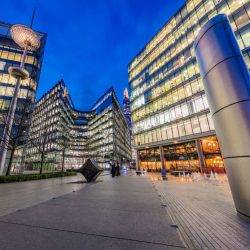May 25, 2018
Coworking trends are influencing design and layout of central London offices

The rise of coworking and flexible working are affecting the design and layout of central London offices, with many traditional offices being given makeovers to reflect current trends in wellness and connectivity. And according to Cluttons’ Central London Office Market Outlook for Spring 2018, the Central London office market continues to experience a comparatively low vacancy rate – currently standing at 5.9 percent percent well below the 15 year average of just under 8 percent, which is more or less the same following Brexit in mid 2016. In comparison, following the peak of the last cycle at the end of 2007, the overall vacancy rate in Central London moved out from 7 percent to an average of 8.2 percent in the following two years. Landlords have been generally far more responsive to the recent downturn than in previous cycles; not only in relation to rent but also lease flexibility, together with a willingness to cap service charges and dilapidations with older style buildings. Alongside this, the volume of flexible office space in London rose by 20 percent last year as smaller firms move into serviced or managed offices.
Faisal Durrani, Head of Research at Cluttons comments: “As we work our way through a very quiet patch for the London office market, the market disrupting trends of coworking and flexible working are having a profound impact on the way landlords are responding.
“For the first time, people are being placed at the heart of building design, with many older buildings also facing the prospect of having their ‘corporate feel’ stripped out in favour of something more contemporary that revolves around increasingly critical considerations such as wellness and connectivity.”
“Smaller suites are facing the most significant challenges at present, with space of under 2,000 to 3,000 sq ft in particular being side stepped by smaller occupiers and SME’s in favour of serviced or managed offices, which are increasingly in vogue, not least because of the cost savings. Going beyond CAT A fit outs is not only an expectation of landlords, but a necessity if voids are to be minimised.”
























